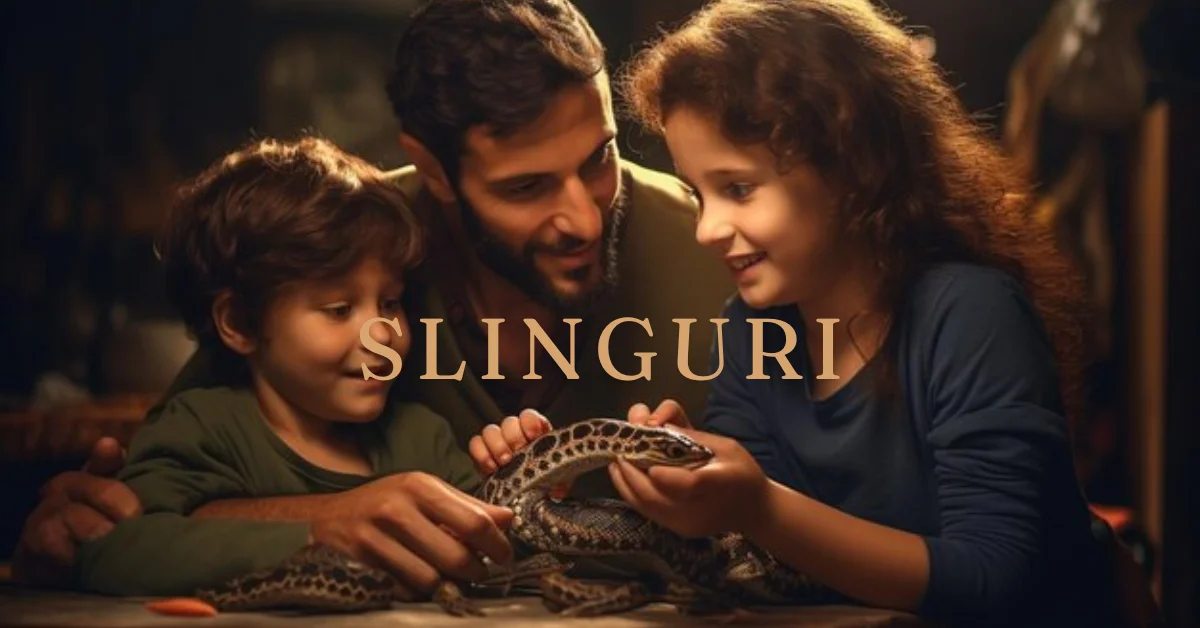
A birthday scavenger hunt is not just another party game. It’s an adventure, a puzzle, and a journey all rolled into one. When done right, it transforms an ordinary birthday celebration into an unforgettable experience. If you’re looking to create a memorable event that your guests will talk about for years, then a birthday scavenger hunt is the perfect solution. In this guide, you’ll find everything you need to know to plan, organize, and execute a fantastic scavenger hunt for any age group.
Why Choose a Birthday Scavenger Hunt?
A scavenger hunt is more than a game; it’s an interactive experience that brings people together. It can be customized to fit any theme, location, or age group, making it a versatile choice for birthday celebrations. The thrill of finding clues, solving puzzles, and racing against time adds an element of excitement that’s hard to match. Plus, it encourages teamwork, creativity, and problem-solving skills.
Planning Your Birthday Scavenger Hunt
1. Define Your Theme
Every great scavenger hunt starts with a theme. The theme sets the tone and guides the entire event. Here are some popular ideas:
- Pirate Adventure: Sail the seven seas (or your backyard) in search of buried treasure.
- Mystery Detective: Become Sherlock Holmes and solve the mystery before time runs out.
- Fantasy Quest: Embark on a magical journey through enchanted lands to find hidden relics.
- Nature Explorer: Discover the wonders of the great outdoors as you hunt for natural treasures.
Choose a theme that matches the birthday person’s interests, whether it’s their favorite movie, book, or hobby. This will make the hunt more personal and engaging.
2. Set the Scene
Location is key to a successful scavenger hunt. Depending on your theme, you can host it indoors, outdoors, or even across multiple locations. Here are some ideas:
- Indoors: Ideal for smaller groups or younger children. You can use your home, a rented space, or even a large indoor venue.
- Outdoors: Parks, gardens, or your backyard offer plenty of space and natural elements to incorporate into the hunt.
- Multiple Locations: For older participants or more complex hunts, consider spreading the clues across different locations in your town or city.
Make sure the location is safe, accessible, and suitable for the age group of your participants.
3. Create Your Clues
Clues are the heart of any scavenger hunt. They should be challenging but not impossible, and they should tie into your theme. Here are some types of clues you can use:
- Riddles: Test participants’ wits with clever wordplay.
- Puzzles: Incorporate jigsaw puzzles, crossword puzzles, or ciphers that need solving.
- Photo Clues: Show participants a close-up photo of the next location or item they need to find.
- Physical Challenges: Add tasks that require physical activity, like running, jumping, or balancing.
- Hidden Messages: Use invisible ink, mirror writing, or codes that need to be deciphered.
Make sure the clues are varied and cater to different skill levels. You can provide hints if needed, but remember that part of the fun is in the challenge!
4. Organize the Teams
Decide whether participants will play individually or in teams. For larger groups, teams work better as they encourage cooperation and interaction. Consider the following when forming teams:
- Size: Teams of 3-5 people work well, allowing everyone to contribute.
- Balance: Mix ages, abilities, and personalities to ensure fair competition.
- Roles: Assign specific roles like the clue solver, map reader, or team leader to each member.
If the birthday person has a special group of friends, consider letting them pick their own team or be the team leader.
Executing the Birthday Scavenger Hunt
1. Start with a Bang
Kick off the scavenger hunt with an exciting introduction. You could:
- Deliver a Story: Create a backstory that explains why the participants need to complete the hunt. Maybe they’re saving the world, finding a lost artifact, or cracking a secret code.
- Use Costumes: Encourage participants to dress up according to the theme. This adds a fun, immersive element.
- Provide Gear: Hand out themed items like maps, compasses, or magnifying glasses that they’ll need during the hunt.
The introduction sets the tone, so make it engaging and fun.
2. Keep the Momentum Going
A successful scavenger hunt maintains excitement from start to finish. Here’s how to keep the energy high:
- Timed Clues: Introduce timed challenges where participants must solve a clue within a certain period.
- Surprise Elements: Add unexpected twists like bonus challenges, surprise prizes, or fake clues that lead to dead ends.
- Checkpoints: Have participants check in at certain points, where they can receive new clues or hints if needed.
Ensure there’s a steady pace, with moments of high energy followed by opportunities to catch their breath.
3. End with a Celebration
The end of the scavenger hunt should be just as memorable as the start. Here are some ideas:
- Final Challenge: Have a grand finale where the last clue leads to the biggest prize or the ultimate goal.
- Awards Ceremony: Celebrate the winners with medals, trophies, or themed prizes. Consider giving out awards for the most creative team, the best costume, or the fastest completion.
- Party Time: After the hunt, transition smoothly into a birthday party with food, cake, and music.
The end of the scavenger hunt should feel like a victory, not just a conclusion.
Adapting the Scavenger Hunt for Different Age Groups
Scavenger hunts are incredibly versatile and can be tailored to suit any age group. Here’s how to adapt the game:
1. For Young Children (Ages 3-7)
- Simpler Clues: Use picture clues, colors, or familiar objects.
- Shorter Duration: Keep the hunt brief, around 30-45 minutes.
- Parental Involvement: Encourage parents to join in, especially for very young children.
2. For Tweens (Ages 8-12)
- More Complex Puzzles: Introduce basic riddles, word searches, or matching games.
- Interactive Elements: Incorporate physical challenges like obstacle courses or scavenging for specific items.
- Themed Rewards: Offer prizes that fit the theme, such as small toys, books, or themed party favors.
3. For Teens (Ages 13-18)
- Advanced Puzzles: Use ciphers, QR codes, or trivia related to their interests.
- Larger Area: Expand the hunt to cover a larger area, like a neighborhood or park.
- Tech Integration: Incorporate smartphones, apps, or social media for clues and challenges.
4. For Adults
- Complex Themes: Choose a sophisticated theme, like a murder mystery or escape room-style hunt.
- Challenging Clues: Use more intricate puzzles, brainteasers, or trivia.
- Higher Stakes: Consider offering more valuable prizes or incorporating elements of competition.
Tips for a Smooth and Successful Scavenger Hunt
Here are some additional tips to ensure everything runs smoothly:
1. Test the Hunt
Before the big day, test your scavenger hunt with a small group to identify any potential issues. Make sure the clues make sense, the timing works, and the difficulty level is appropriate.
2. Plan for Different Outcomes
Prepare for various scenarios, such as:
- Ties: Have a tie-breaking challenge ready.
- Weather: Have an indoor backup plan if you’re planning an outdoor hunt.
- Technical Glitches: If you’re using technology, make sure you have a backup plan in case something goes wrong.
3. Keep Safety in Mind
Safety should always be a priority, especially for outdoor hunts. Make sure participants are aware of any potential hazards and provide necessary safety gear if needed.
4. Delegate Tasks
If you’re hosting a large event, don’t be afraid to ask for help. Assign specific tasks to friends or family members, like clue distribution, team management, or food preparation.
Incorporating Technology into Your Scavenger Hunt
In today’s digital age, technology can add a new dimension to your scavenger hunt. Here are some ways to incorporate tech:
1. QR Codes
Create QR codes that participants can scan to receive their next clue. This adds an element of surprise and modernity.
2. GPS Challenges
Use GPS coordinates to lead participants to different locations. This works especially well for outdoor or citywide hunts.
3. Social Media Integration
Encourage participants to post photos or updates on social media as they complete each challenge. This not only adds excitement but also allows you to track progress in real time.
4. Apps and Websites
There are several apps and websites designed specifically for scavenger hunts. They offer pre-made templates, clue ideas, and even real-time tracking features.
Memorable Themes for a Birthday Scavenger Hunt
Choosing a memorable theme is crucial. Here are some unique ideas to inspire you:
1. Time Travel Adventure
Participants travel through different eras, solving clues related to historical events, fashion, or famous figures.
2. Space Odyssey
Transform your venue into a galaxy far, far away. Clues could involve decoding alien languages or navigating constellations













